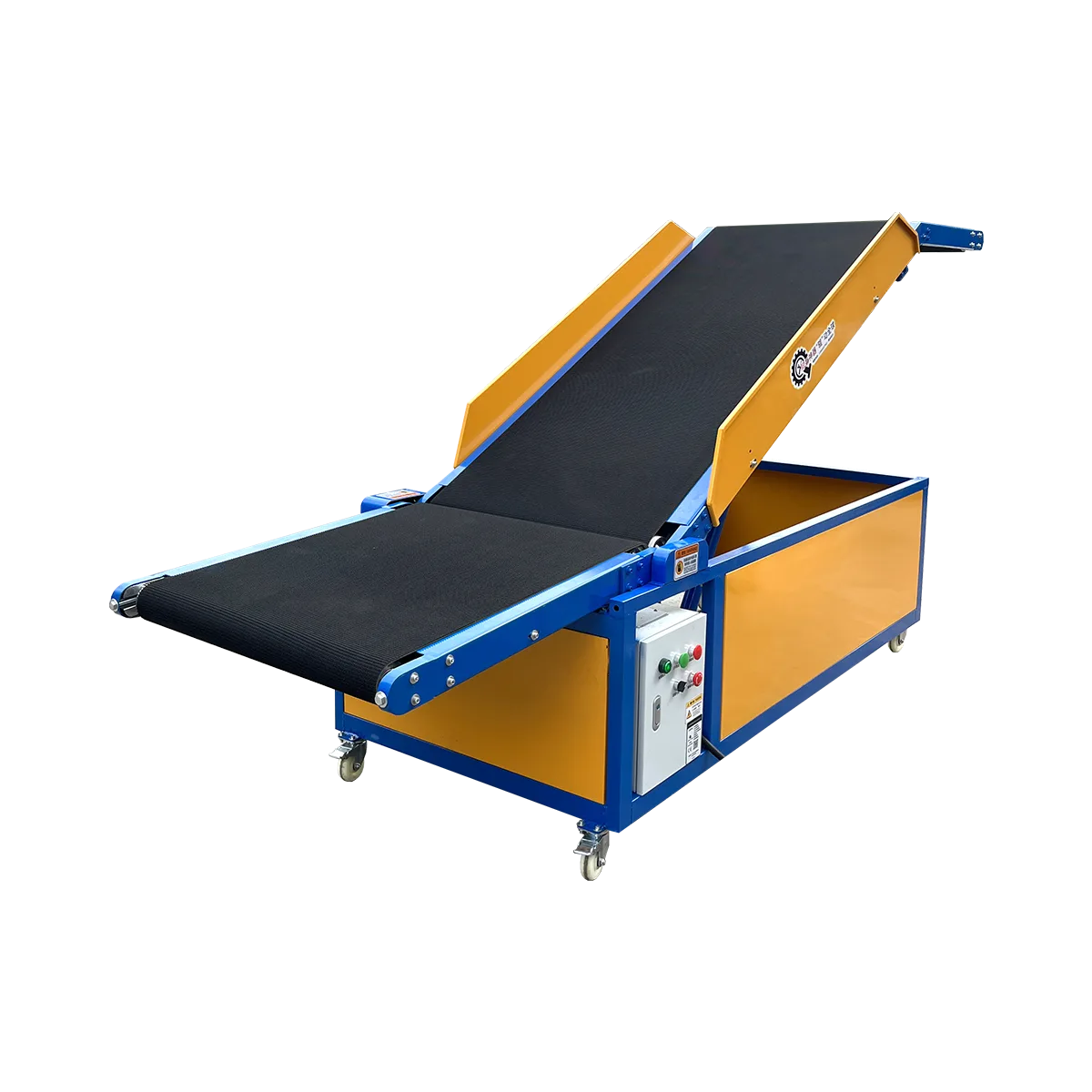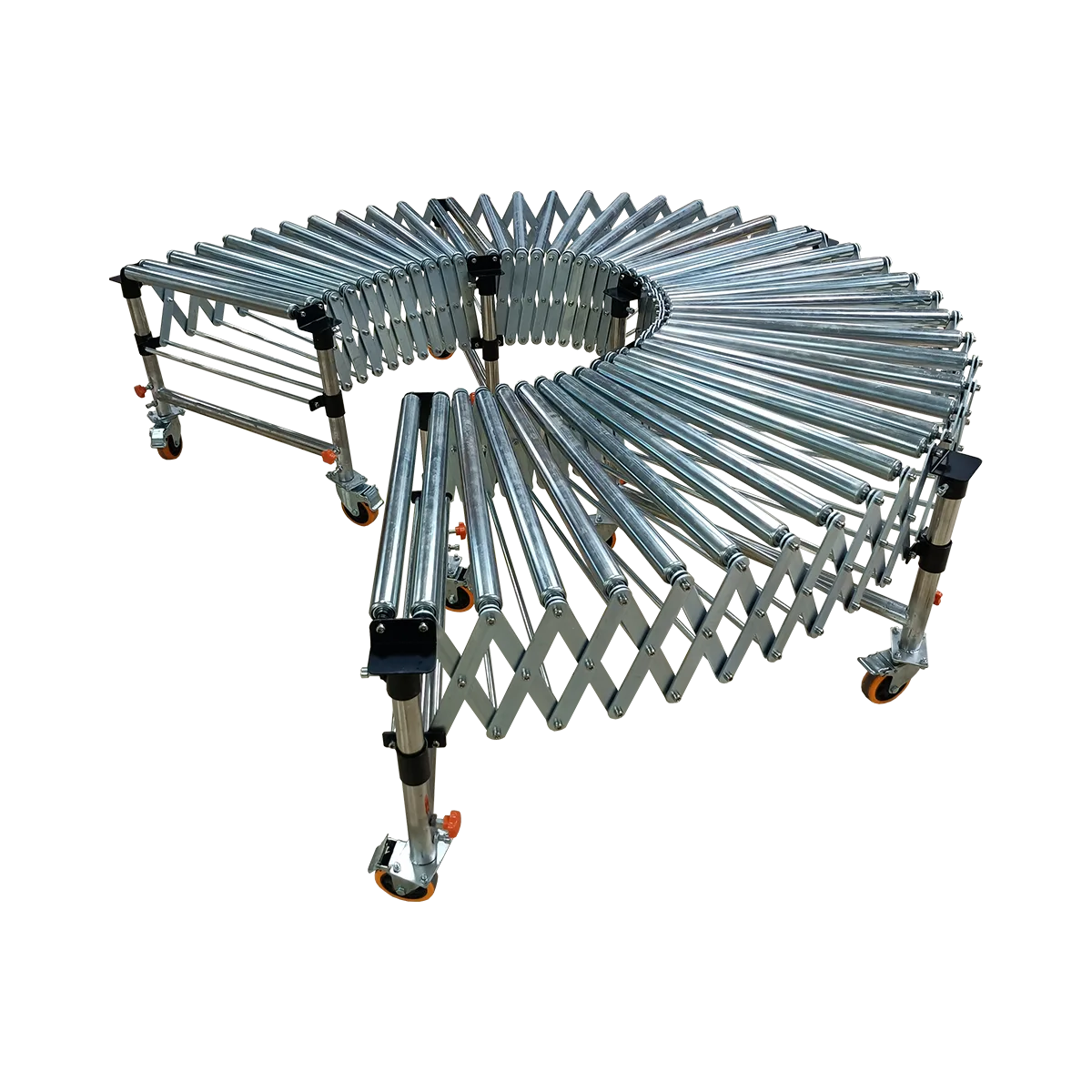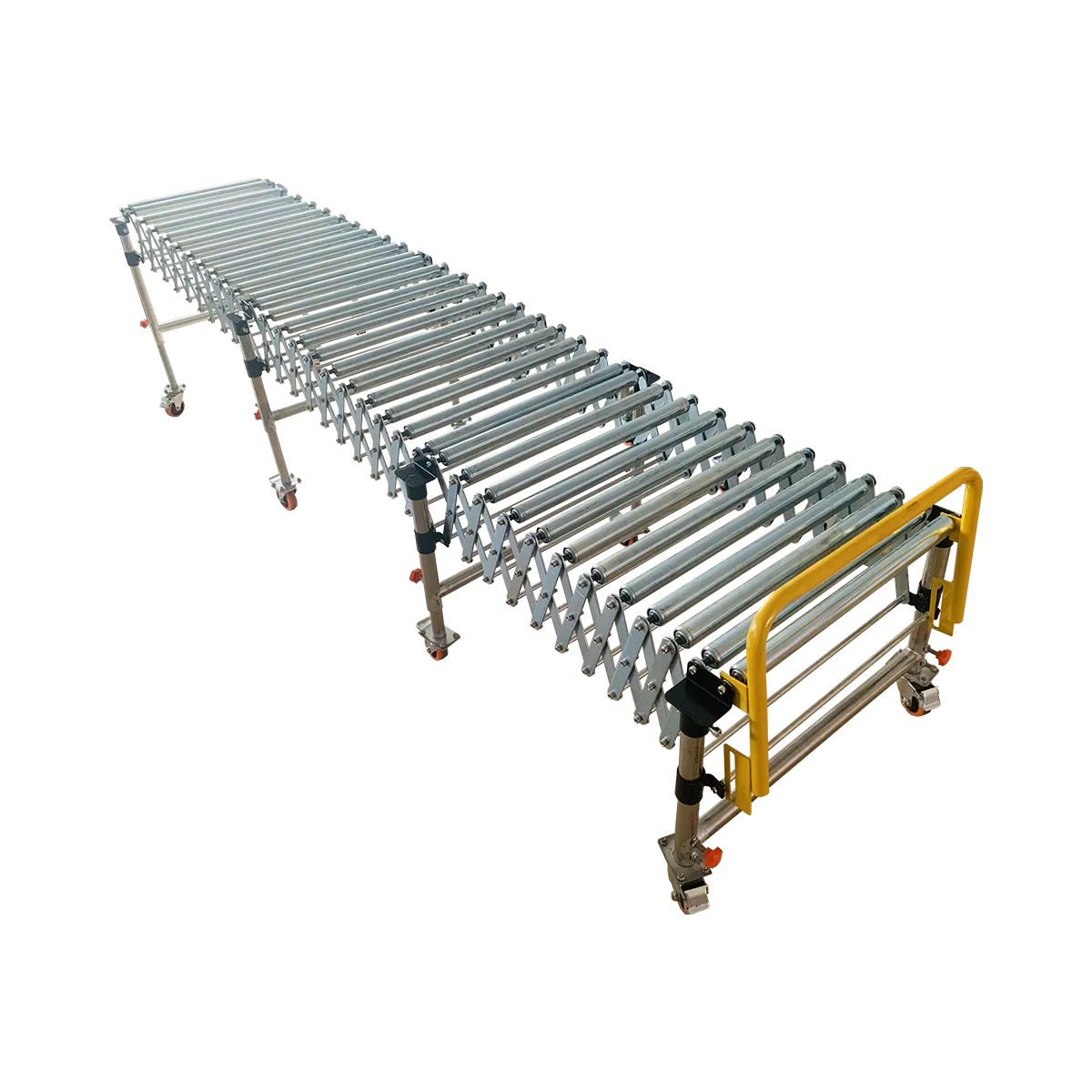The Best Conveyor for Unloading Delivery Vans (Sprinter, Transit, etc.)
Discover the ideal van loading conveyor solution for Sprinter, Transit and other delivery vehicles. Our Micro Hydraulic Conveyor system boosts efficiency while saving labor costs.
Related Products
-
Hydraulic Conveyor – Micro – 3700 mm LengthCollapsed LengthExtended LengthLoad Capacity
50 kg/m
Applicable GoodsFlat-bottomed Goods
Bagged Goods
-
Gravity Skate Wheel Conveyor – 2100 mm/SectionCollapsed Length
420 mm
Extended Length2100 mm
Load Capacity50 kg/m
Applicable GoodsFlat-bottomed Goods
-
Gravity Roller Conveyor – Roller Diameter 50 mm – 1500 mm/SectionCollapsed Length
525 mm
Extended Length1500 mm
Load Capacity50 kg/m
Applicable GoodsFlat-bottomed Goods
Bagged Goods
-
Gravity Roller Conveyor – Roller Diameter 38 mm – 1700 mm/SectionCollapsed Length
485 mm
Extended Length1700 mm
Load Capacity50 kg/m
Applicable GoodsFlat-bottomed Goods
Bagged Goods
When logistics professionals discuss material handling equipment, the conversation often gravitates toward solutions for large trucks and shipping containers. However, the reality of modern commerce includes a massive fleet of delivery vans—Mercedes Sprinters, Ford Transits, and similar vehicles—that form the backbone of last-mile logistics and urban deliveries. These smaller vehicles present unique delivery van unloading solution challenges that differ significantly from their larger counterparts. With e-commerce continuing to surge and delivery expectations tightening, finding efficient ways to load and unload these vehicles has become increasingly critical for operations of all sizes.
The right van loading conveyor system can dramatically reduce unloading times, minimize worker strain, and increase throughput—turning what is often a bottleneck into a smooth, efficient process. This article examines why standard loading equipment often fails to meet the specific needs of delivery vans and how purpose-designed solutions like the Micro Hydraulic Conveyor can transform your van-based logistics operations.
The Challenge: Vans have a lower, more awkward height than standard trucks
Delivery vans present several unique challenges that make traditional loading and unloading equipment either inefficient or completely incompatible:
Height Limitations
The cargo floor height of delivery vans typically ranges from 500mm to 700mm above ground level—significantly lower than standard trucks or containers which sit at 1200-1500mm. This awkward “middle height” means:
- Standard dock levelers are positioned too high
- Fixed-height conveyors can’t align properly
- Workers must bend repeatedly to transfer items, increasing injury risk
- Conventional ramps consume excessive space and create steep angles
Space Constraints
Unlike larger vehicles with wide, square cargo areas, delivery vans feature:
- Narrower doorways (typically 1200-1400mm wide)
- Interior height restrictions that limit equipment options
- Curved interior walls that reduce usable space
- Limited interior depth (typically 3000-4000mm) that restricts conveyor reach
Volume and Package Diversity
Modern delivery operations handle:
- Varied package sizes from small parcels to medium boxes
- Fluctuating daily volumes requiring flexible solutions
- Time-sensitive deliveries demanding rapid turnaround
- Multiple van types within the same fleet requiring adaptable equipment
These challenges mean that equipment designed for larger vehicles often proves impractical, while manual handling creates inefficiencies and potential safety hazards. The ideal solution must specifically address the unique dimensional and operational characteristics of delivery vans.
The Perfect Fit: Naili’s Micro Hydraulic Conveyor
After extensive research into the specific needs of van-based logistics operations, Naili developed the Micro Hydraulic Conveyor—a purpose-built solution that addresses the unique challenges of delivery van loading and unloading.
How its 700mm-1700mm height range is ideal for vans
The Micro Hydraulic Conveyor’s design is specifically optimized for the dimensional requirements of delivery vans:
- Precise height adjustment: The system’s 700mm minimum height perfectly aligns with most delivery van cargo floors, while its maximum 1700mm height allows it to service slightly taller vehicles when needed
- Compact footprint: At just 3700mm total length (with an 800mm upper platform, 2000mm incline section, and 1000mm lower platform), it fits comfortably in tight loading areas
- Appropriate capacity: The 50kg/m load capacity matches the typical package weight range handled in van deliveries
- Manageable width options: Available in 600mm and 800mm widths to accommodate various package sizes while fitting through standard van doorways
This precise dimensional compatibility eliminates the awkward height mismatch that makes other loading systems ineffective with delivery vans. The system creates a smooth, continuous path from ground level directly into the vehicle, eliminating lifting and reducing handling time.
Its smaller footprint and lower cost make it a proportional investment
The Micro Hydraulic Conveyor represents a right-sized investment for van-based operations:
- Scale-appropriate solution: Smaller and more affordable than larger hydraulic systems designed for full-sized trucks
- Rapid ROI: Typically achieves payback within 6-12 months for operations handling 1000+ packages daily
- Operational savings: Reduces labor requirements by up to 50% compared to manual unloading methods
- Space efficiency: Compact design requires minimal floor space when in use
- Energy efficient: 750W conveyor motor and 2.2kW hydraulic pump consume minimal power
- Mobility advantage: Can be easily repositioned to service multiple loading areas
For operations managing a fleet of delivery vans, this represents an ideal balance between capability and investment. Rather than over-engineering with equipment designed for larger vehicles, the Micro Hydraulic Conveyor provides precisely what’s needed for efficient van operations.
The Complete Van Unloading System
While the Micro Hydraulic Conveyor forms the core of an effective van unloading system, creating a truly optimized solution typically involves pairing it with complementary equipment to extend reach and functionality.
Micro Hydraulic Conveyor for the lift
The hydraulic unit serves as the critical bridge between ground level and the van floor:
- Powered belt surface: The 5.0mm PVC black grass-pattern anti-slip belt provides reliable grip for packages of all types
- Bidirectional operation: Supports both loading and unloading operations with forward/reverse controls
- Simple controls: Intuitive control panel with raise/lower, forward/reverse, and emergency stop functions
- Stable positioning: Heavy-duty casters with brakes ensure the unit remains secure during operation
- Durable construction: Robust steel frame construction provides years of reliable service
The hydraulic design allows precise alignment with the van floor, eliminating the gap that often causes package damage and worker strain with other solutions. The powered belt actively moves packages up the incline, eliminating the need for manual pushing that’s required with passive ramps.
Lightweight Gravity Skate Wheel sections to extend into the van
To complete the system, the Micro Hydraulic Conveyor can be paired with gravity skate wheel conveyor sections that extend into the vehicle:
- Ultra-lightweight design: At just 14-20kg per section (depending on width), these units can be easily positioned by a single worker
- Exceptional space efficiency: The 1:5 compression ratio means a 2100mm extended section collapses to just 420mm for storage
- Ideal for van interiors: The narrow profile and ability to navigate around interior obstacles makes these perfect for reaching deep into vans
- No power required: Gravity operation means no electrical connections are needed inside the vehicle
- Smooth transfer: The 48mm diameter skate wheels with 608 international bearings provide low-resistance movement for packages
- Height adjustability: Support legs adjust from 450-1500mm to accommodate various vehicle interior configurations
This combination creates a complete material handling pathway from the ground directly to the deepest part of the van’s cargo area. Workers simply place packages on the conveyor at ground level, and the system delivers them into the vehicle with minimal manual handling.
Why this is better than a simple ramp: Powered, bidirectional, and height-adjustable
When evaluating solutions for van loading and unloading, operations managers often consider simple ramps as an economical alternative. However, the Micro Hydraulic Conveyor system offers several critical advantages that deliver superior performance and long-term value:
Powered vs. Manual Movement
Unlike passive ramps that require workers to physically push each item:
- The powered belt actively moves packages up the incline
- Workers expend significantly less energy, reducing fatigue
- Throughput remains consistent throughout shifts rather than declining as workers tire
- Heavier packages move as easily as lighter ones
- Consistent speed maintains predictable throughput rates
Bidirectional Operation
While ramps only facilitate gravity-assisted downward movement:
- The Micro Hydraulic Conveyor supports both loading and unloading operations
- The same equipment serves dual purposes, maximizing investment value
- Operations can quickly switch between receiving and shipping functions
- Packages move smoothly in either direction without manual intervention
Precision Height Adjustment
Fixed ramps cannot adapt to different vehicle heights:
- The hydraulic system allows precise alignment with various van models
- Height can be adjusted while in operation to accommodate different vehicles
- Eliminates gaps between the conveyor and vehicle that cause package damage
- Creates a truly continuous surface for smooth package transfer
Safety Considerations
The Micro Hydraulic Conveyor also offers significant safety advantages:
- Eliminates the steep angles often required with ramps
- Reduces risk of packages sliding or falling during transfer
- Minimizes worker strain and associated injury risks
- Includes emergency stop functionality
- Features anti-slip belt surface for secure package handling
For operations handling significant package volumes, these advantages translate directly into higher throughput, lower labor costs, and reduced workplace injuries—delivering a compelling return on investment compared to simpler but less effective alternatives.
Practical Implementation: Setting Up Your Van Unloading Station
Implementing an efficient conveyor for Sprinter van unloading station requires careful planning and consideration of your specific operational needs. Here’s a practical guide to setting up your system:
Space Requirements
For a complete Micro Hydraulic Conveyor with gravity skate wheel extensions:
- Minimum area: Approximately 5m x 3m (including working space)
- Clearance height: Minimum 2.5m overhead clearance
- Access requirements: Clear path for van approach and positioning
- Surface conditions: Level, stable floor surface
Electrical Requirements
The system has modest power needs:
- Supply: Standard 220/380V connection
- Consumption: 750W conveyor motor + 2.2kW hydraulic pump
- Safety: Includes leakage protection and emergency stop functionality
Operational Configuration
The most efficient setup typically includes:
- Micro Hydraulic Conveyor positioned perpendicular to the van’s rear doors
- 2-3 sections of gravity skate wheel conveyor for extension into the vehicle
- Staging area at the ground-level end for package preparation
- Clear walking paths on both sides for operator movement
Staffing Model
For optimal efficiency:
- Minimum: 2 workers (one loading packages, one arranging inside van)
- Optimal: 3 workers (one loading, one receiving, one organizing)
- Throughput capacity: 2500-3500 medium packages (5-15kg) per hour
This configuration creates a streamlined workflow that dramatically reduces the time and effort required to load or unload delivery vans, turning a traditionally labor-intensive process into a smooth, efficient operation.
Conclusion: Give your van delivery fleet the same efficiency tools as your large trucks
As e-commerce continues to reshape logistics operations, the importance of efficient delivery van handling grows increasingly critical. The small truck loader solutions that transform operations for large vehicles are now available at an appropriate scale for van-based logistics as well.
By implementing a purpose-designed system built around the Micro Hydraulic Conveyor, operations can:
- Reduce unloading time by up to 70% compared to manual methods
- Decrease labor requirements while increasing throughput
- Minimize worker fatigue and injury risks
- Accommodate diverse vehicle types within a single fleet
- Create a more predictable, consistent material handling process
For businesses managing significant package volumes through delivery vans, this represents a compelling opportunity to eliminate a common operational bottleneck. The modest investment required for these systems typically delivers rapid returns through labor savings, increased throughput, and reduced workplace injuries.
In today’s competitive logistics environment, every efficiency advantage matters. By giving your van fleet the same level of material handling support that larger operations enjoy, you position your business to meet growing delivery demands while controlling costs and protecting your workforce.
Frequently Asked Questions
Can the Micro Hydraulic Conveyor work with different van heights?
Yes, the system adjusts from 700mm to 1700mm, accommodating virtually all delivery van models including Sprinter, Transit, ProMaster, and similar vehicles. The hydraulic system allows precise height alignment with different vehicle floors.
How many packages can this system process per hour?
With two workers, the system can handle approximately 2500-3500 medium-sized packages (5-15kg) per hour. This represents a 200-300% improvement over typical manual unloading methods.
Do I need a permanent installation for this equipment?
No, the Micro Hydraulic Conveyor features heavy-duty casters that allow it to be moved and repositioned as needed. This mobility makes it ideal for operations that service multiple loading areas or need to reconfigure their space frequently.
Can the system handle both loading and unloading operations?
Absolutely. The bidirectional belt drive allows packages to move in either direction, making the system equally effective for loading packages into vans or unloading them. The controls include forward/reverse functionality to support both operations.
What maintenance does the system require?
Maintenance requirements are minimal. Regular checks include inspecting the conveyor belt tension, hydraulic fluid levels, and bearing condition. Most components are designed for 5-10 years of normal operation before requiring replacement.
Table of Contents
Recent Posts
Discover how to select the perfect conveyor width for your warehouse operations. Our expert guide helps you match box sizes to conveyor dimensions for optimal efficiency and fewer jams.
Discover effective outdoor conveyor solutions for connecting warehouse to truck across open yards. Our guide to all-weather yard logistics will transform your loading efficiency.





